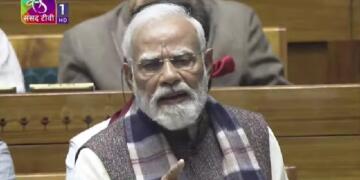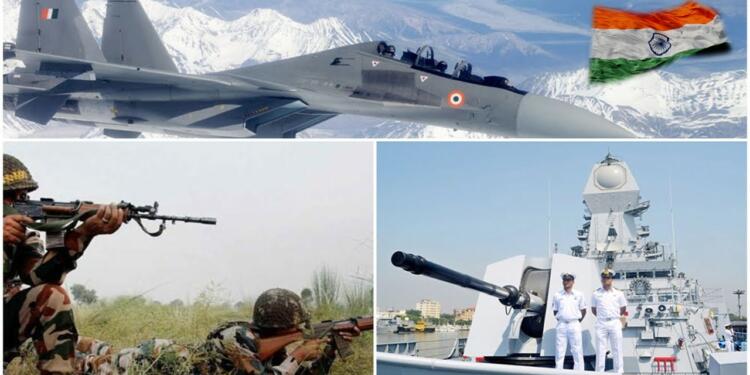Implementation is the key that decides the success or failure of any scheme or policy. While India aims to decrease its dependence on defense imports, it’s equally important to upgrade our defense capabilities in line with modern warfare. For this reason, analyzing the outcomes becomes critical for rational decision-making, which is devoid of rhetoric and mere sloganeering.
DAC accepts proposal to buy Rs. 70,500 crore in defense armaments
Recently, India cleared the proposal to buy indigenous military hardware worth 70,500 crore. The Defence Ministry released an official statement to announce its major decision. As per the official statement, the proposal includes the purchase of supersonic missiles, artillery guns, maritime helicopters, and a long-range standoff weapon.
As per standard rules for defence acquisition, the Defense Acquisition Council (DAC) is India’s top weapons procurement body. It is headed by Raksha Mantri, and currently it is headed by Raksha Mantri Rajnath Singh.
For defence procurement, the first step is to get clearance from the DAC. This is called acceptance of necessity (AoN). In simple terms, DAC accepts that it is necessary to buy defence hardware to increase the defence capabilities of the Indian Armed Forces.
Now, it is important to note that DAC has been the arm of the government that is implementing the vision of Atma Nirbhar Bharat in the defence manufacturing sector.
This new clearance by the DAC, worth Rs 70,500, for defence purchases is a significant step towards achieving self-reliance in the defence manufacturing sector.
The breakdown of the AoN
Further, the DAC has approved to buy 225 BrahMos missiles, Shakti Electronic Warfare (EW) systems, and 60 utility helicopters for the Indian Navy. The approval also includes the purchase of nine Advanced Light Helicopters (AHL) for the Coast Guard, 300 advanced towed artillery gun systems (ATAGS) for the Indian Army, and a long-range standoff weapon for the Air Force’s Sukhoi-30 fighters.
Another important thing to note is that clearance falls under the most important category for defence acquisition. This category for indigenisation is known as the Indian-IDDM category in the defence procurement policy.Here, IDDM stands for indigenously designed, developed, and manufactured.
The largest share of this approved proposal is for the Indian Navy. In fact, out of the total proposal of Rs 70,500 crores, only 56,000 crores are estimated for purchasing hardware for the Indian Navy. These include the BrahMos missiles, the Shakti EW systems, and utility helicopters.
The Defense Ministry said, “While the additional BrahMos missile systems will enhance maritime strike capabilities and anti-surface warfare operations, the utility helicopters will multiply the operational readiness of the Indian Navy for search and rescue operations, casualty evacuation, and humanitarian assistance disaster relief. The EW systems will equip and modernise frontline warships to counter any action by the adversaries.”
Special focus on ATAGS
Moreover, the Indian Army will purchase the 155mm/52-calibre Advanced Towed Artillery Gun System(ATAGS). This will be in addition to the acquisition of high-mobility and gun-towing vehicles. In order to replace outdated guns with modern ones, the Defense Research and Development Organization (DRDO) started the ATAGS project in 2013. For the production of the gun, it worked with two private companies, Bharat Forge Limited and Tata Advanced Systems Limited. These A-TAGS have a 48-kilometre range.
Last year, a prototype of this A-TAG was used for the Independence Day ceremony at Red Fort for the ceremonial 21-gun salute. It was used along with the traditionally used British guns.
For the very first time, the DAC also approved the development and production of medium-speed marine diesel engines under the ‘Make-1 category’.
The Defense Ministry stated that India is venturing into the development and manufacturing of such engines indigenously to achieve self-reliance. With this, it will leverage the capabilities of the industry towards the goal of Aatmanirbhar Bharat.
Now, before moving ahead, it is important to understand the classification done by the Defense Ministry.
‘Make’ categorization
The “Make-1” category is part of the Defense Procurement Procedure (DPP). ‘Make-1’ refers to government-funded projects. It’s a cornerstone in the Make in India initiative. This aims to develop indigenous capabilities through public and private sector involvement.
Now, ‘Make 2’ covers industry-funded programs. Another sub-category is ‘Make-3’. It covers military hardware that may be designed and developed by Indian firms in collaboration with foreign partners.
HAL: The biggest beneficiary
The approved acquisition proposal will largely benefit Hindustan Aeronautics Limited (HAL) and other domestic players. The approval includes the purchase of 60 UH Marine choppers from HAL. This order will be worth Rs 32,000 crore on its own.
Read More : Indian Air force gets ‘SAMAR ready’ for war
The important thing to note is that this month has been terrific for HAL. Earlier, on March 10, the defence ministry signed a Rs 667 crore contract with HAL. This was done to buy six Dornier 228 aircraft for the Indian Air Force. This resulted in a surge in HAL stock prices.
Additionally, earlier this month, the Union Cabinet approved the purchase of 70 HTT-40 primary trainer aircraft from HAL. This order is worth Rs 6,828.36 crore.
HAL’s chairman and managing director, CB Ananthakrishnan, stated that it has an order book worth Rs 84,000 crore. In addition to that, HAL has an order pipeline worth another Rs 50,000 crore.
AoN- (Acceptance of Necessity) granted by the DAC so far
In total, the council has given AoN for capital acquisition for projects worth over 2.71 lakh crore in the years 2022–23. The Defense Ministry stated that 99% of procurement will be done by domestic industry.
Earlier this month, on March 7, the defense ministry signed two separate contracts with HAL and Larsen & Toubro. The contracts were for three cadet training ships and 70 HTT-40 basic trainer aircraft. The orders are expected to increase self-reliance and are worth Rs 9,900 crore. The latest DAC clearance came after these contracts were signed.
Building a Stronger Defence: Structural Steps and Stats for Self-Reliance
The government has created a separate budget for buying locally made military hardware. It has also taken several steps to promote self-reliance in the defence manufacturing sector. These include the major decision to increase foreign direct investment (FDI) from 49% to 74% and notifying import embargo lists. These lists have been rapidly expanding to help our domestic manufacturers.
During Aero India 2023, Raksha Mantri Rajnath Singh announced that 75% of this year’s defence capital procurement budget will be used to buy weapons and systems from domestic producers. This is the highest percentage allocated to the domestic sector. In the last three years, India has allocated 68%, 64%, and 58% of the military’s capital acquisition budget.
Read More : Modi Magic: from Border to Beijing, China is under Indian radar!
This year, Rs 1 lakh crore has been earmarked for domestic procurement. Compared to this, the government allocated 84,598 crore, 70,221 crore, and 51,000 crore in the previous three years.
Raksha Mantri Rajnath Singh also suggested that India might impose an import embargo on more weapons and systems. Four “positive indigenization lists” have so far prohibited the import of 411 weapons and systems.
This assertive push, with Raksha Mantri stating that nearly 75% of India’s capital defence budget will be used to boost indigenous defence manufacturing, should be a clear parameter to judge the success of these flagship schemes. The only issue that remains is that there is enough space and a need to increase the total defence expenditure while keeping an eye on our adversaries, China in particular. With that caution in mind, India is set on a positive trajectory courtesy of a clear vision to increase our self-reliance along with making our defence forces ready as per modern warfare.
Support TFI:
Support us to strengthen the ‘Right’ ideology of cultural nationalism by purchasing the best quality garments from TFI-STORE.COM































